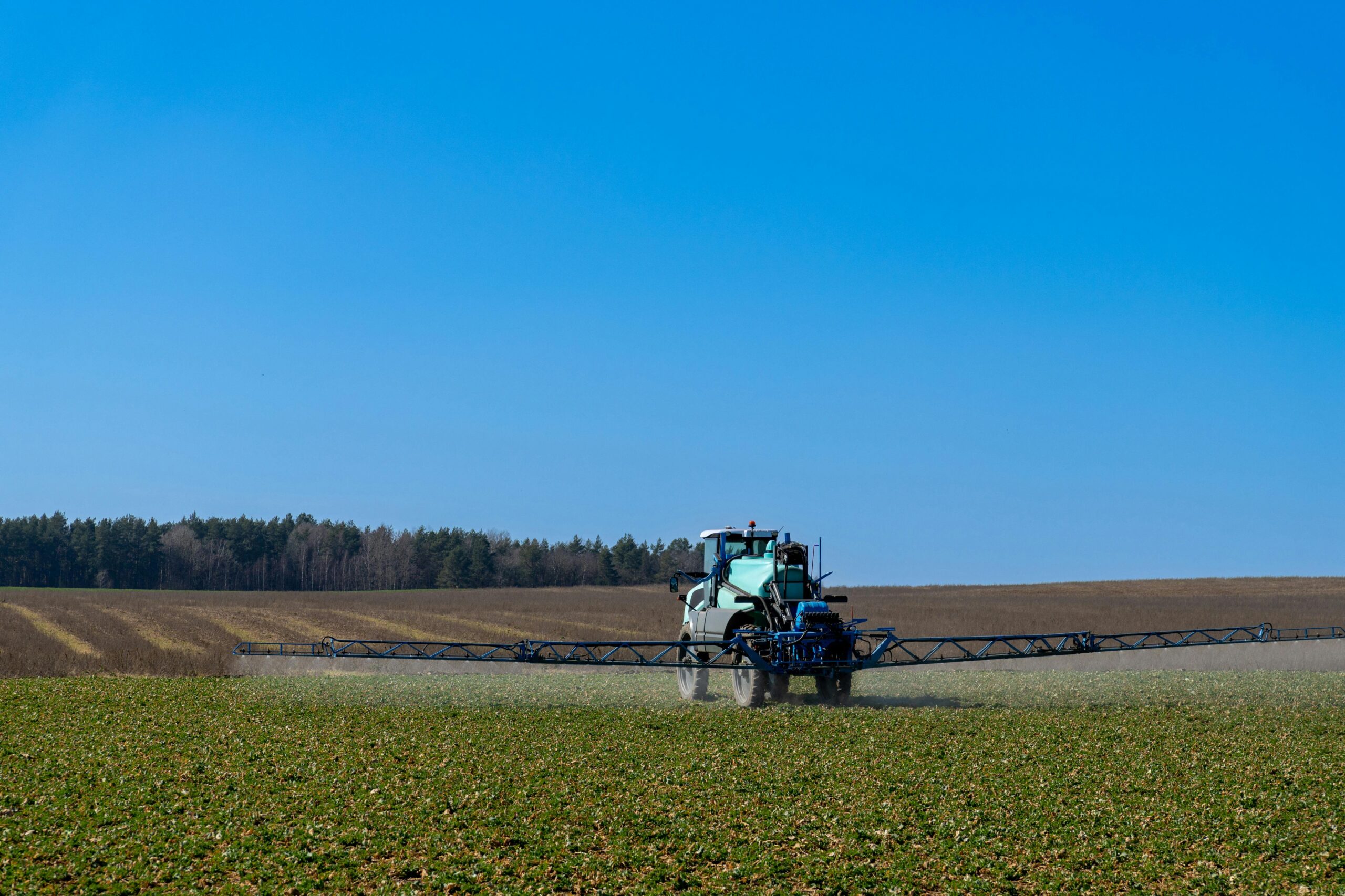Agriculture is experiencing a digital transformation as automation technology reshapes traditional farming practices, promising increased efficiency, sustainability, and profitability for farmers worldwide.
🚜 The Dawn of Smart Farming
The agricultural sector stands at the precipice of its most significant revolution since the introduction of mechanized equipment in the early 20th century. Automation in agriculture represents far more than simple mechanization—it embodies a comprehensive integration of artificial intelligence, robotics, data analytics, and precision technology that fundamentally transforms how we produce food.
Modern farms are increasingly resembling high-tech operations centers rather than traditional pastoral settings. Sensors embedded in soil monitor moisture levels in real-time, drones survey vast expanses of cropland for disease detection, and autonomous tractors navigate fields with GPS precision. This technological convergence is not merely about replacing human labor; it’s about augmenting human decision-making with data-driven insights that were previously impossible to obtain.
The global agricultural automation market has witnessed exponential growth, with projections suggesting it will reach unprecedented valuations within the next decade. This surge reflects both necessity and opportunity—necessity driven by challenges like labor shortages, climate change, and increasing food demand; opportunity created by technological advancements that make automation more accessible and affordable than ever before.
Precision Agriculture: Farming with Surgical Accuracy
Precision agriculture represents one of the most impactful applications of automation technology in farming. By leveraging GPS technology, IoT sensors, and sophisticated software platforms, farmers can now treat their fields with unprecedented specificity. Rather than applying water, fertilizers, or pesticides uniformly across entire fields, precision agriculture enables targeted application based on the unique needs of specific zones or even individual plants.
Variable rate technology (VRT) exemplifies this approach perfectly. Automated systems analyze soil composition, nutrient levels, and moisture content across different field sections, then adjust seeding rates, fertilizer application, and irrigation accordingly. This granular control delivers multiple benefits simultaneously: reduced input costs, minimized environmental impact, and optimized crop yields.
Remote sensing technologies have become indispensable tools for modern precision farming. Satellite imagery and drone-mounted multispectral cameras capture data invisible to the human eye, revealing plant health indicators like chlorophyll content and water stress before symptoms become visually apparent. These early warning systems allow farmers to intervene proactively rather than reactively, preventing minor issues from escalating into significant crop losses.
Data-Driven Decision Making
The true power of precision agriculture lies not in the sensors themselves but in the actionable intelligence derived from the data they collect. Advanced analytics platforms aggregate information from multiple sources—weather stations, soil sensors, yield monitors, and historical records—to generate predictive models and prescriptive recommendations.
Machine learning algorithms continuously refine these models based on outcomes, creating a feedback loop that improves decision accuracy over time. Farmers gain insights into optimal planting windows, irrigation schedules, pest management strategies, and harvest timing. This data-driven approach removes much of the guesswork traditionally associated with farming, replacing intuition with evidence-based strategies.
🤖 Autonomous Machinery: The New Farmhands
Autonomous agricultural machinery represents perhaps the most visible manifestation of farming automation. Self-driving tractors, robotic harvesters, and automated feeding systems are transitioning from experimental prototypes to commercially available products deployed on farms across the globe.
These machines operate with remarkable precision and consistency, performing tasks with accuracy that human operators struggle to match. Autonomous tractors maintain perfectly straight rows, optimize fuel consumption, and work continuously without fatigue. They navigate using RTK GPS technology that provides centimeter-level positioning accuracy, ensuring that subsequent operations like planting, spraying, and harvesting align perfectly with previous passes.
Robotic harvesters equipped with computer vision systems can identify ripe produce, assess quality, and pick fruits or vegetables with gentle precision that prevents damage. These systems work around the clock, dramatically increasing harvest efficiency while addressing labor shortage challenges that plague agricultural regions worldwide.
Collaborative Robotics in Livestock Management
Automation extends beyond crop production into livestock operations as well. Robotic milking systems have become increasingly common in dairy farming, allowing cows to be milked on their own schedule rather than adhering to fixed times. These systems identify individual animals, monitor milk production and quality, and alert farmers to potential health issues based on deviations from normal patterns.
Automated feeding systems ensure livestock receive precisely calibrated nutrition tailored to their specific needs and life stages. Sensors monitor animal behavior, detecting early signs of illness or distress that might escape human observation. This continuous monitoring improves animal welfare while optimizing production efficiency.
Vertical Farming and Controlled Environment Agriculture
Automation technology has enabled entirely new agricultural paradigms, with vertical farming representing one of the most revolutionary developments. These indoor farming facilities stack growing layers vertically, using LED lighting, hydroponic or aeroponic systems, and complete environmental control to produce crops year-round regardless of external weather conditions.
Vertical farms are essentially automated factories for food production. Sensors continuously monitor temperature, humidity, light intensity, CO2 levels, and nutrient concentrations. Automated systems adjust these parameters in real-time to maintain optimal growing conditions. Robotic systems handle seeding, transplanting, and harvesting operations with minimal human intervention.
The advantages are compelling: vertical farms use up to 95% less water than traditional agriculture, require no pesticides due to the controlled environment, and can be located near urban centers, reducing transportation costs and emissions. While energy consumption remains a challenge, advances in LED efficiency and renewable energy integration are steadily improving the sustainability equation.
💧 Smart Irrigation: Every Drop Counts
Water scarcity represents one of agriculture’s most pressing challenges, making irrigation efficiency critically important. Smart irrigation systems exemplify how automation addresses resource constraints while maintaining or improving productivity.
Modern irrigation systems integrate weather forecasts, soil moisture sensors, plant water requirements, and evapotranspiration models to determine precisely when and how much to irrigate. Automated controllers adjust watering schedules dynamically, canceling irrigation when rain is imminent or reducing application rates when soil moisture remains adequate.
Drip irrigation combined with automation delivers water directly to plant roots with minimal waste. Zone-specific control allows different field areas to receive customized irrigation based on their unique characteristics. Some advanced systems even use plant-based sensors that measure water stress directly, providing the most accurate indicator of irrigation needs.
The water savings are substantial—automated irrigation systems typically reduce water consumption by 20-50% compared to traditional methods while often increasing yields through more consistent moisture management. In water-stressed regions, this efficiency improvement can determine whether farming remains viable.
🛰️ Drones: The Aerial Revolution
Agricultural drones have rapidly evolved from novelty items to essential farm management tools. These unmanned aerial vehicles perform diverse functions that would be impractical or impossible through ground-based methods.
Crop monitoring represents the most common drone application. Equipped with various camera systems—RGB, multispectral, thermal, or hyperspectral—drones capture detailed imagery revealing crop health, growth patterns, pest infestations, and irrigation problems. The aerial perspective provides comprehensive field views that identify issues invisible from ground level.
Beyond monitoring, drones are increasingly performing active farming operations. Agricultural spray drones can apply pesticides, herbicides, and fertilizers with precision comparable to ground-based systems but with superior speed and accessibility. They navigate terrain unsuitable for ground equipment and work in conditions that would be hazardous for human operators.
Specialized drones even perform tasks like pollination assistance in areas with declining bee populations or precision seeding in hard-to-reach terrain. As battery technology improves and regulations evolve, drone capabilities and applications continue expanding.
Artificial Intelligence: The Brain Behind Automation
Artificial intelligence serves as the cognitive layer that transforms individual automated systems into cohesive, intelligent farming ecosystems. Machine learning algorithms analyze vast datasets to identify patterns, make predictions, and optimize operations beyond human capability.
Computer vision powered by deep learning enables machines to recognize diseases, identify weeds, assess ripeness, and detect quality issues with accuracy rivaling or exceeding human experts. These systems learn from thousands or millions of images, continually improving their recognition capabilities.
Predictive analytics anticipate problems before they occur. AI models forecast disease outbreaks based on weather patterns and historical data, predict yield outcomes weeks before harvest, and recommend optimal market timing. Natural language interfaces allow farmers to query their farm data conversationally, making sophisticated analytics accessible without technical expertise.
Integration and Interoperability Challenges
Despite AI’s tremendous potential, integration challenges persist. Agricultural technology often operates in silos, with equipment from different manufacturers using incompatible data formats and communication protocols. Industry efforts toward standardization are gradually addressing these issues, but truly seamless farm management systems remain aspirational for many operations.
🌱 Economic Realities and Return on Investment
The financial considerations surrounding agricultural automation are complex and vary dramatically based on farm size, crop types, and geographic location. While automation technology promises numerous benefits, the upfront investment can be substantial, creating accessibility challenges for smaller operations.
Large-scale commodity producers typically find the clearest economic justification for automation. The efficiency gains, input savings, and quality improvements deliver measurable returns that justify capital expenditures. Payback periods for technologies like precision agriculture systems or automated irrigation often range from 2-5 years, making them financially attractive investments.
Smaller farms face more challenging economics. The fixed costs of many automation technologies don’t scale proportionally downward, meaning the per-acre investment for small operations exceeds that of large farms. However, equipment sharing arrangements, service provider models, and increasingly affordable entry-level technologies are improving accessibility.
Beyond direct financial returns, automation delivers less quantifiable benefits like improved work-life balance, reduced physical strain, and enhanced decision confidence. For many farmers, these quality-of-life improvements justify investments that might appear marginal on spreadsheets alone.
Environmental Sustainability and Climate Resilience
Agricultural automation contributes significantly to environmental sustainability goals. Precision application of inputs reduces chemical runoff into waterways and minimizes greenhouse gas emissions associated with fertilizer production. Optimized irrigation conserves increasingly scarce water resources while maintaining crop productivity.
Automation enables farming practices previously impractical at scale. Cover cropping, reduced tillage, and diverse crop rotations become more manageable with automated equipment capable of handling the additional complexity. These practices improve soil health, sequester carbon, and enhance biodiversity while maintaining economic viability.
Climate change poses enormous challenges for agriculture, but automation technologies help farmers adapt. Predictive models informed by weather data allow proactive adjustments to planting schedules, variety selections, and management practices. Real-time monitoring enables rapid response to unexpected weather events, minimizing crop losses.
🔮 The Human Element: Changing Skills and Roles
Contrary to fears that automation will eliminate agricultural jobs, the reality is more nuanced. While certain manual tasks decrease, new roles emerge requiring different skill sets. Modern farmers increasingly need data literacy, technological proficiency, and systems thinking alongside traditional agricultural knowledge.
The role of farmer is evolving from manual laborer to farm manager and decision-maker. Rather than spending hours on tractors, farmers analyze data, interpret recommendations, and make strategic decisions about crop management, marketing, and business operations. This transition requires education and training support to help existing farmers adapt while attracting new talent with diverse backgrounds.
Agricultural technology companies face growing demand for specialists who understand both farming and technology—agronomists who can program sensors, engineers who understand crop science, and data scientists familiar with agricultural contexts. This convergence creates exciting career opportunities while addressing the industry’s critical skills gap.
Looking Forward: The Future of Automated Agriculture
The trajectory of agricultural automation points toward increasingly autonomous, interconnected, and intelligent farming systems. Emerging technologies promise to accelerate this transformation, with 5G networks enabling real-time communication between devices, edge computing processing data directly on farms, and blockchain providing transparent supply chain tracking.
Genetic engineering combined with precision agriculture will enable truly personalized crop management, with specific varieties selected and managed according to microclimate conditions within individual fields. Swarm robotics may coordinate multiple small, specialized machines working collaboratively rather than relying on large, expensive equipment.
Perhaps most transformatively, regenerative agriculture principles integrated with automation technology could fundamentally reshape farming’s environmental impact. Imagine systems that not only sustain productivity but actively restore soil health, enhance biodiversity, and sequester atmospheric carbon at scale.

Making the Transition: Practical Steps Forward
For farmers considering automation adoption, starting small and scaling gradually often proves most successful. Begin with technologies addressing your most pressing challenges—perhaps soil moisture sensors if irrigation efficiency concerns you, or yield monitors if understanding field variability is the priority. Build expertise with simpler systems before investing in comprehensive automation platforms.
Engage with agricultural extension services, university research programs, and farmer networks to learn from others’ experiences. Demonstrations and pilot programs allow hands-on evaluation before committing significant capital. Consider lease or service arrangements that reduce upfront costs while providing access to advanced technologies.
Most importantly, view automation as a tool supporting better decision-making rather than a replacement for agricultural expertise. The most successful implementations combine technological capability with deep farming knowledge, creating synergies that neither alone could achieve.
The revolution in agricultural automation is not coming—it’s already here, transforming farms worldwide and redefining what’s possible in food production. While challenges remain, the potential benefits for productivity, sustainability, and farmer quality of life make this transformation both inevitable and desirable. By embracing these technologies thoughtfully and strategically, agriculture can meet the dual imperatives of feeding a growing global population while stewarding our planet’s resources for future generations. 🌾
Toni Santos is a future-of-work researcher and social innovation writer exploring how technology, culture, and global mobility are redefining what it means to work and thrive in the 21st century. Through his studies on automation, digital nomadism, and workforce transformation, Toni examines the balance between progress, adaptability, and human purpose in a rapidly changing world. Passionate about remote collaboration systems and digital inclusion, Toni focuses on how emerging tools and global connectivity empower individuals to build meaningful, flexible, and resilient careers. His work highlights how automation and new work models can coexist with creativity, empathy, and social value. Blending sociology, economics, and digital strategy, Toni writes about the human side of innovation — helping readers understand not only where work is heading, but how to align with its transformation responsibly and purposefully. His work is a tribute to: The evolving relationship between automation and human employment The rise of global, location-independent lifestyles The power of resilience and adaptability in the modern workforce Whether you are a freelancer, remote leader, or curious observer of the new economy, Toni Santos invites you to explore the future of work — one idea, one connection, one transformation at a time.




